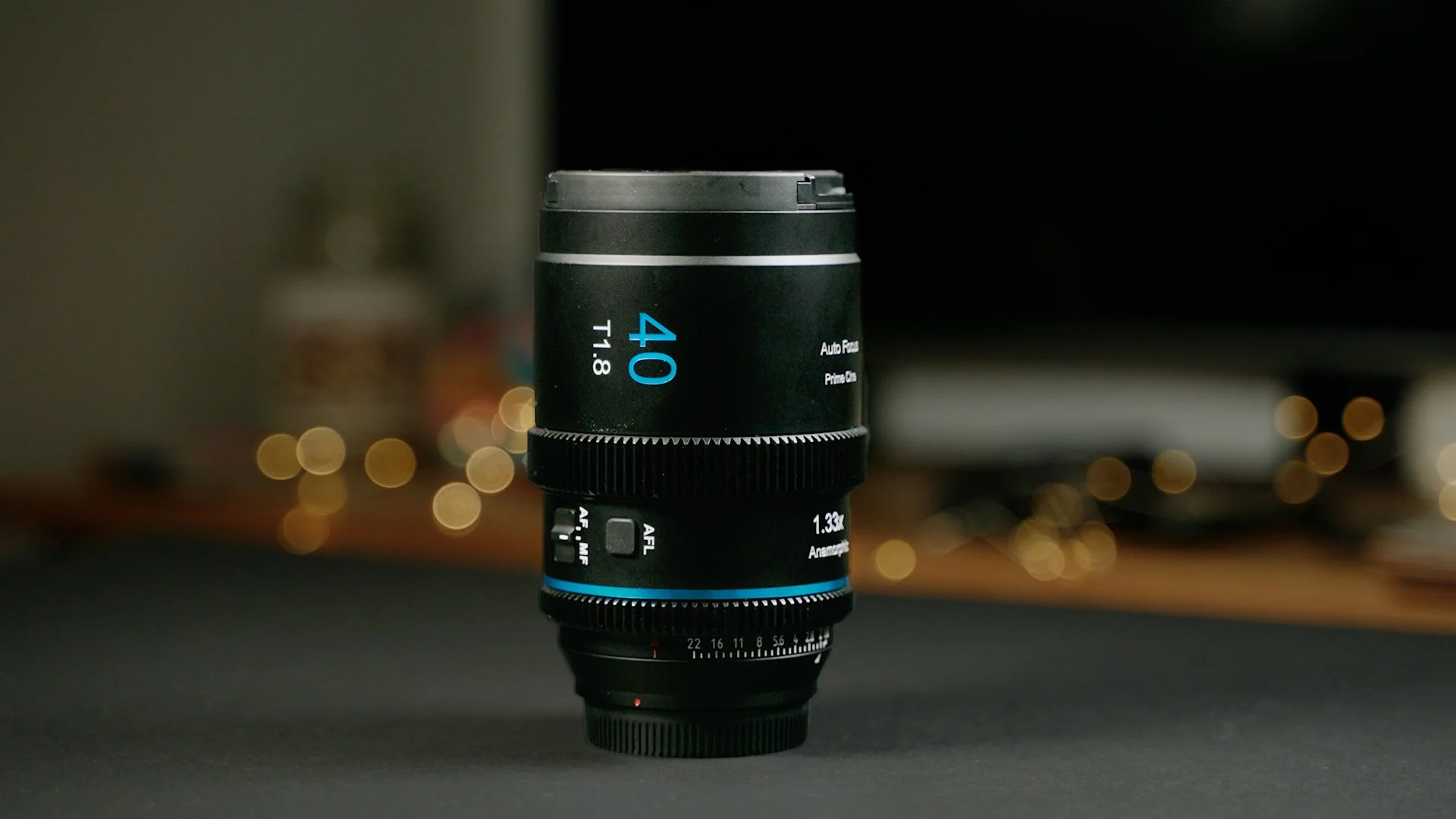Testing SIRUI's Game-Changing Anamorphic on the FX3 | SIRUI 40mm T1.8 1.33x AF Anamorphic Review
Get ready for the future of anamorphic filmmaking!
Today, we're reviewing the highly anticipated SIRUI 40mm T1.8 1.33x S35 AF Anamorphic Lens – Sirui's very first autofocus anamorphic offering. In this video, we dive deep into the lens's performance, exploring its unique cinematic look, sharpness, bokeh, and crucially, how well the autofocus system performs for both video and potentially even stills. We'll also discuss its build quality and overall value proposition for content creators and filmmakers working with Super 35 sensor cameras.
If you're interested in this lens or other products from Sirui, you can use my discount code:
Grindrod5
It can be used on all items except the Sniper Lens.
Intro
Today we're taking a look at Sirui's brand new 40mm autofocus anamorphic lens.
Disclaimer
Full disclosure, Sirui has sent me this lens to try out, however, as always, all thoughts and opinions are my own.
This isn't a super technical review, I'm sure there are plenty of other channels that will cover that information.
With that said let's get into it
Overview
So this is Sirui's first autofocus anamorphic lens.
It's been designed for Super 35 format.
The focal length is 40mm so this works out to be roughly 42mm on a full-frame horizontally.
The aperture can open up to T 1.8 and you have the option to de-click it if you choose.
The filter thread is 77mm.
You have two options as well when it comes to the anamorphic flares. A Blue Flare (for classic anamorphic streaks) and a more Neutral Flare.
The overall construction of the lens feels very solid but it still feels relatively lightweight at roughly 614g
While not intended for use on a full-frame camera, I'll be using this with my fx3 and so the focal length will be slightly different to what you would see with an aps-c camera.
Unboxing
Let's do a quick unboxing to see what you actually get with the lens
Firstly, you have a strap for the carrying case
The carrying case itself is really nice, although I can't say I often use these but it's good they include this.
Then, finally, you have just the lens
The one I have is for Sony E-mount
Desqueeze and test footage
As with all anamorphic footage, you will have to squeeze it in post.
To correctly preview the footage while actually recording, I recommend using an external monitor.
You can use the built-in anamorphic de-squeeze that comes with cameras like the the fx3, however, at the moment you are unable to use this with the autofocus which is a shame.
Flaire
You have two colour flair options when you choose this lens, the classic blue or natural.
In these examples, I'm showing the blue version.
I think this is something you really need to consider when choosing which version you want to get, as depending on the style of footage you want. One may be more useful than the other.
You can of course alter the color in post-production, but it's always better to get it right in camera first when you can.
Bokeh
This lens opens up to T1.4 so it's great in low light and you do get the signature anamorphic oval bokeh.
One thing I will mention though is that at T1.8 you will see the hexagonal elliptical bokeh.
When you stop down to roughly 2.8 you will notice the transition to the more signature 1.33x elliptical shape.
Photography
One of the things I really enjoy about this lens being autofocus is that it gives you a really unique photography option.
Of course, you can use manual focus anamorphic lenses for the same thing but this makes it so much easier
Macro
The Minimum Focus Distance is roughly 2 feet (1.97 feet)
So if you want to get those super close up shots with this lens, as with my previous anamorphic video, I'd highly recommend some macro diopters.
These allow you to get super close while maintaining those anamorphic qualities.
Pros and Cons
So for pros, you of course have the fact that it is an autofocus anamorphic lens...what more can I say.
It's relatively affordable when you compare it to other anamorphic lenses.
The images you can get out of this look great.
Potential cons
Interestingly...the autofocus, it's not as fast as what you may be used to with other lenses, however, if your subjects aren't moving super fast, it's just fine. I also expect this can updated with firmware at some point.
And on that note, if you're using a sony camera like me that has anamorphic squeeze built-in, you can't use the autofocus when this is turned on which is a shame, again this may change with a firmware update. The lens may just be ahead of it's time. For still photography, this isn't really a problem, as I find shooting stills before the squeeze isn't an issue when using the frame guidelines.
Final thoughts
Overall, this is a really solid pick for a lens if you are looking to get into anamorphic shooting, particularly if you do a lot of work on your own like me. The autofocus on an anamorphic really is a fantastic feature to have and I'm looking forward to seeing more and more lenses like this.
As always, if you have any questions, let me know in the comments below and if you'd like to see more videos like this, you can subscribe here or carry on watching one of these videos.
SIRUI 40mm T1.8 AF Anamorphic Sample Footage | Sony FX3
Here is some sample footage from my recent trip to Czechia. This was all filmed on my Sony FX3 with the SIRUI 40mm T1.8 1.33x S35 Autofocus Anamorphic Lens.


